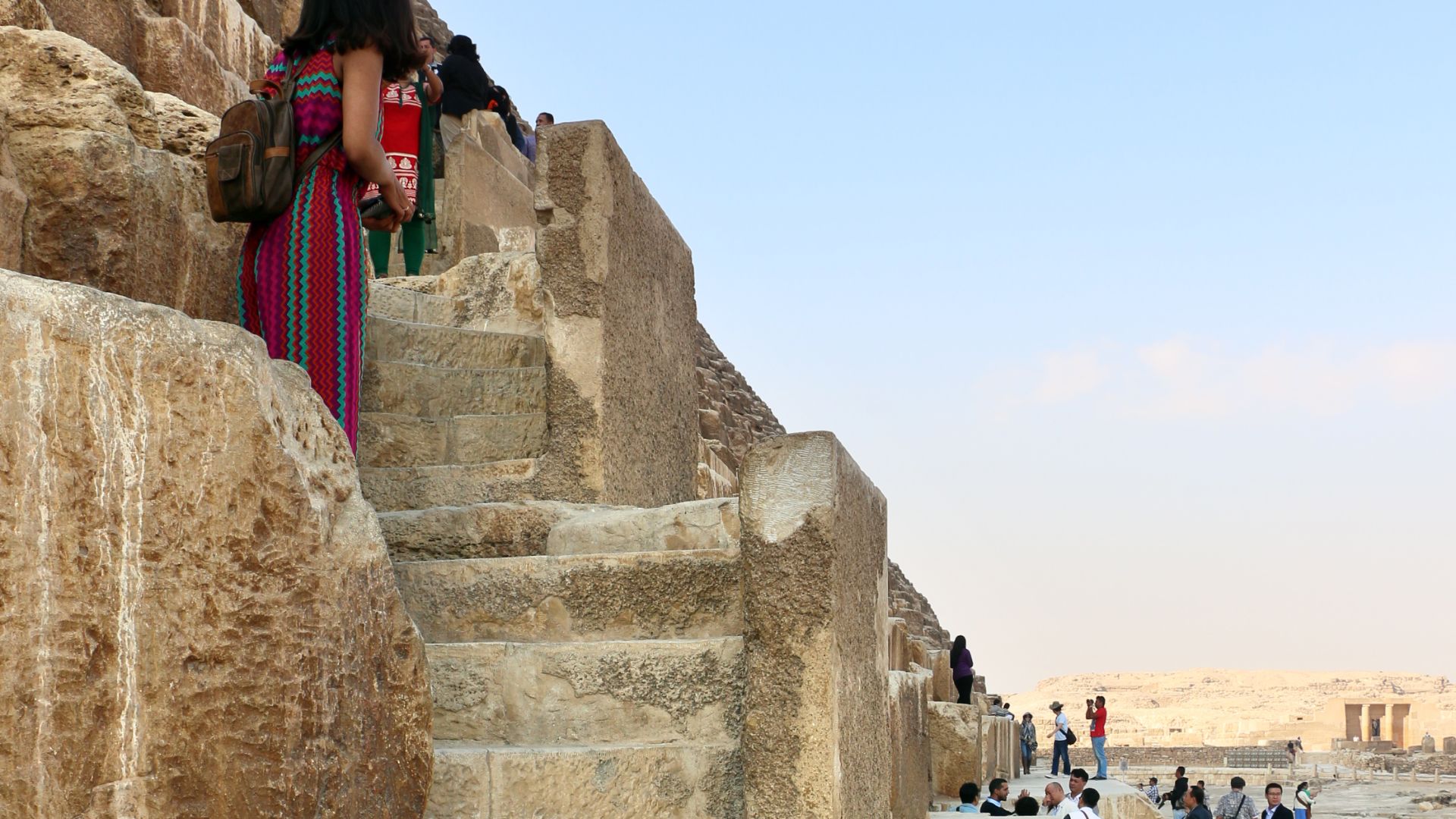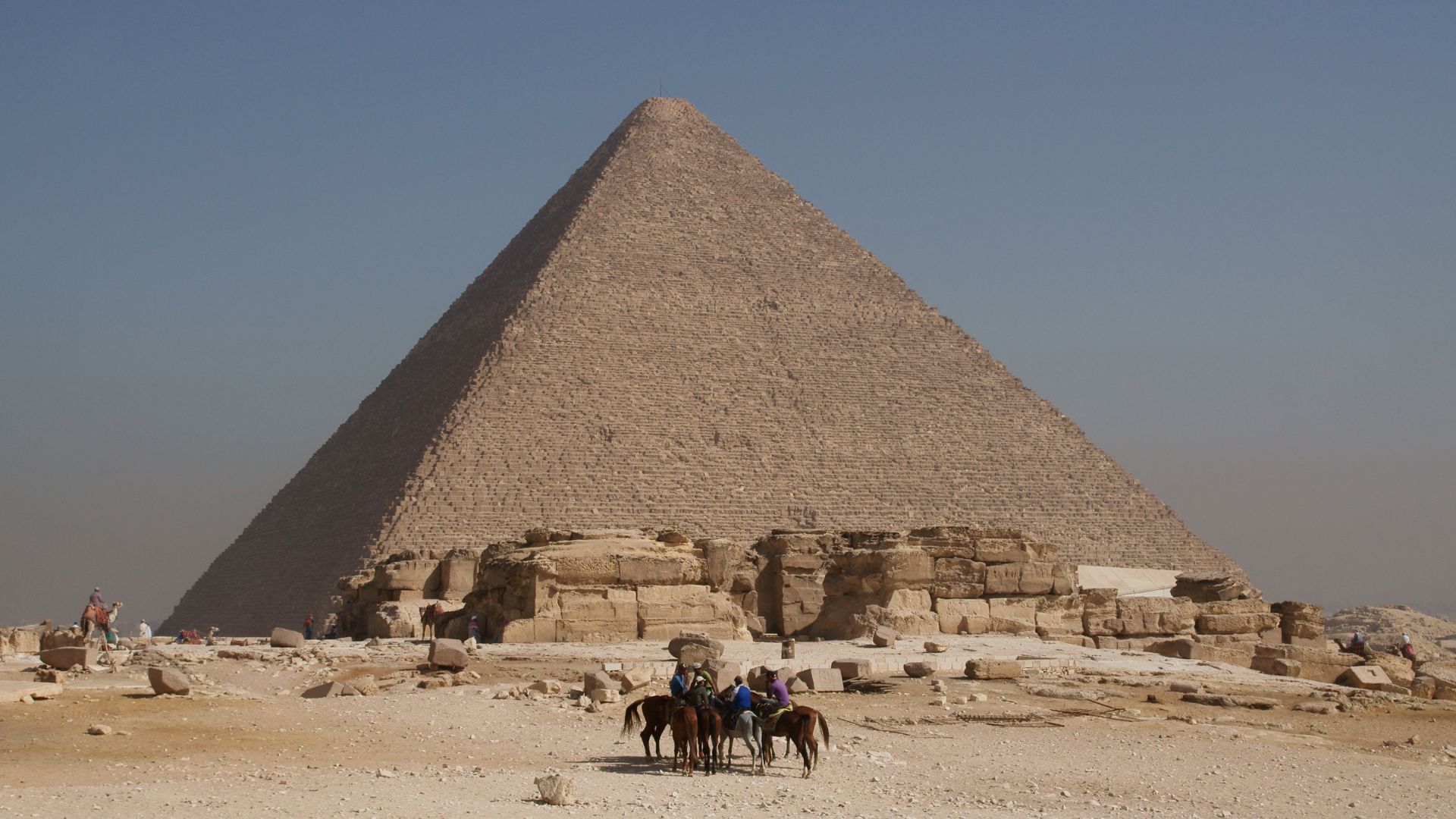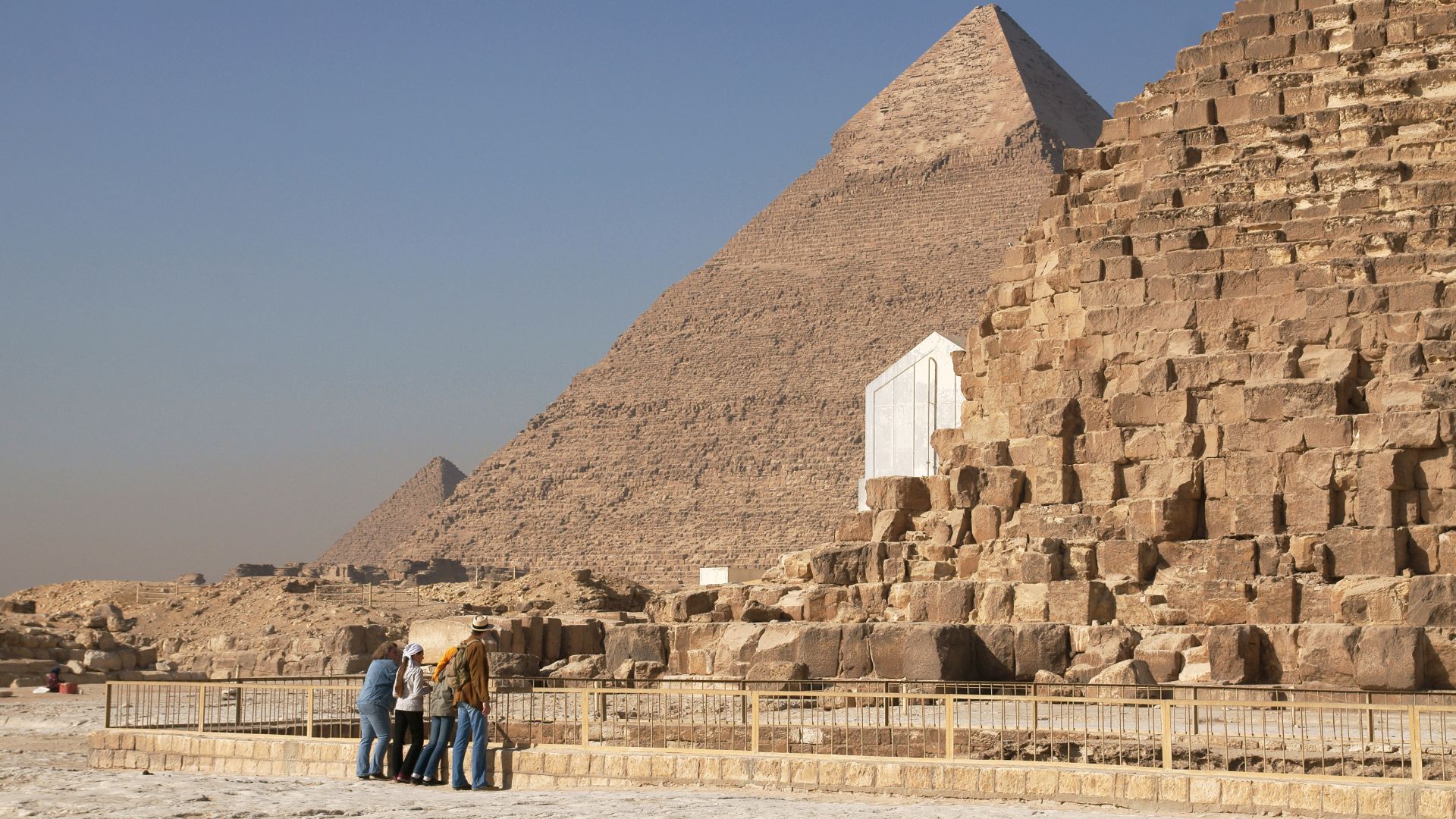Giza Through Time And Stone
Giza's greatest mysteries might still be underground. While millions snap photos of the pyramids, researchers probe beneath the surface, finding hidden passages and peculiar features that challenge everything we thought we understood about ancient Egypt.

Hidden Vibrations From Underneath
Sometimes the ground around the Giza Plateau feels like it’s moving just a little to make people wonder what’s going on underneath. And honestly, it makes sense. With structures this old, there’s probably way more happening below the surface than most visitors ever realize.
 Robster1983 at English Wikipedia, Wikimedia Commons
Robster1983 at English Wikipedia, Wikimedia Commons
Old Stories Of Secret Tunnels
In the early 1800s, explorers such as Giovanni Caviglia and Henry Salt recorded reports of strange wells and shafts around the Sphinx and the causeway of Khafre. These anecdotes, though unconfirmed, linger in archival records and hint at subterranean features around the Giza site.
 John James Halls (1776–1853), Wikimedia Commons
John James Halls (1776–1853), Wikimedia Commons
Entering The Underground Path
Historical excavations show that access to certain shafts was achieved via loose stone blocks and temporary ladders. While no large passages are confirmed, the known descent into bedrock indicates the builders took advantage of natural terrain and perhaps intentionally created deep structural elements.
 Jerome Bon from Paris, France, Wikimedia Commons
Jerome Bon from Paris, France, Wikimedia Commons
Strange Marks On The Walls
Detailed surveys in older tunnels of the Giza plateau show tool marks, quarry lines, and reuse of older stone blocks. These features reflect multiple construction phases and perhaps ritual use rather than the sweeping hieroglyphs of legend. The presence of earlier masonry suggests adaptation over time.
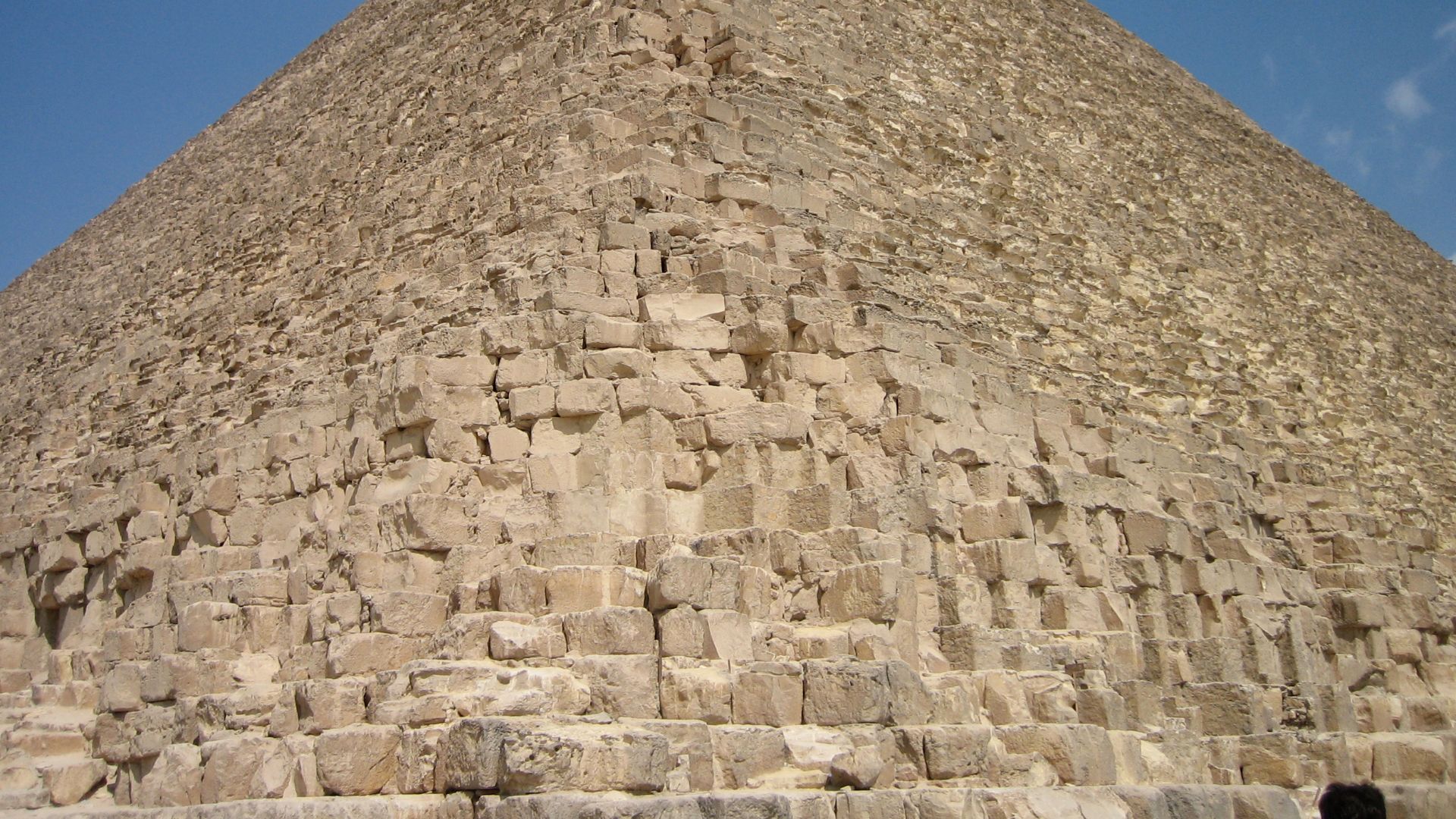 Jerome Bon from Paris, France, Wikimedia Commons
Jerome Bon from Paris, France, Wikimedia Commons
A Split In The Tunnel
At some bedrock-level access routes, archaeologists have found branching paths and dead-end galleries. They do not link to a vast hidden network, but they demonstrate the complexity of the subterranean plan. This branching design may reflect practical construction stages rather than a ritual maze built to test initiates.
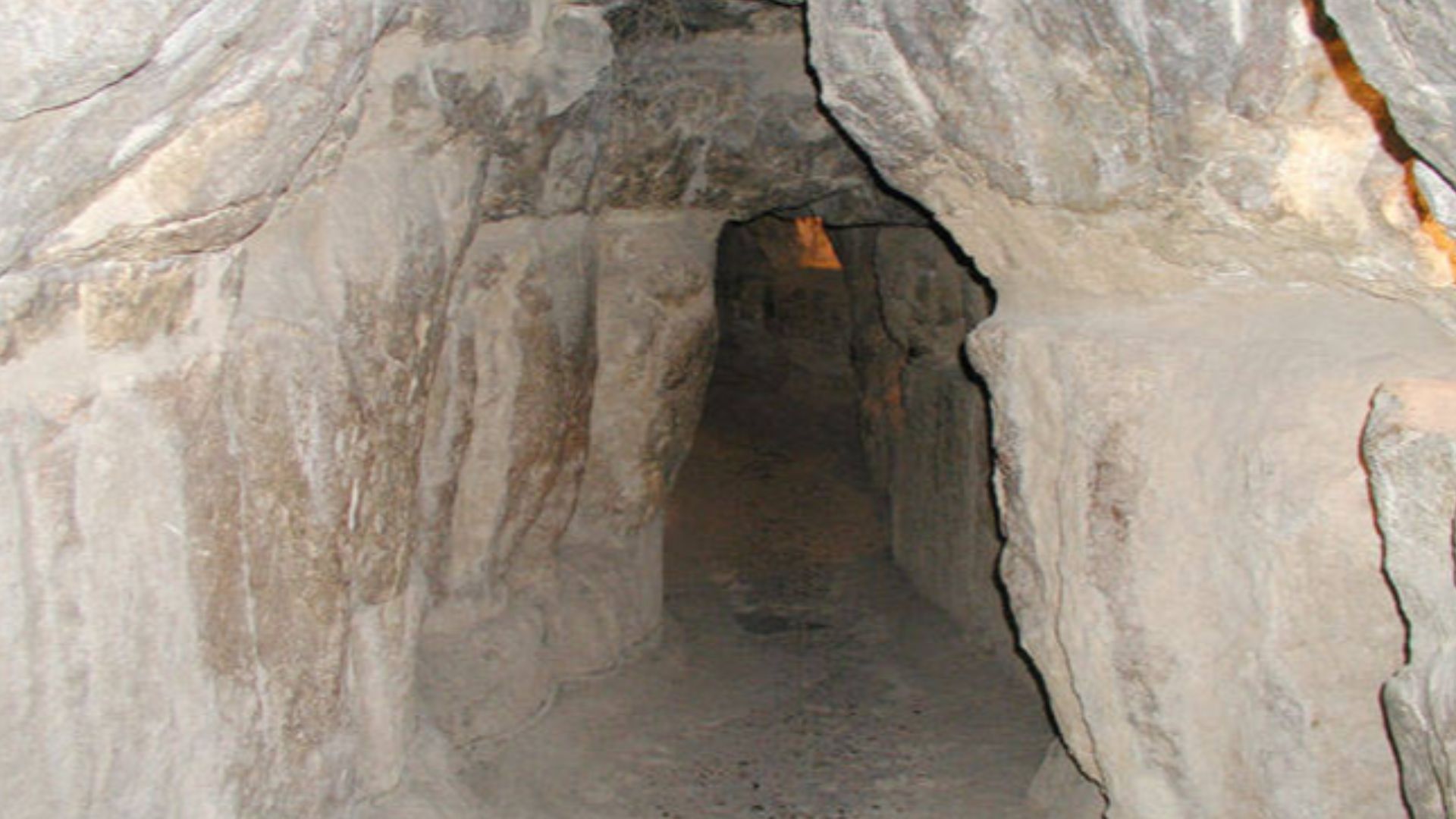 Jon Bodsworth, Wikimedia Commons
Jon Bodsworth, Wikimedia Commons
Smooth Walls With Mystery
Sections of known tunnels near Giza display finely finished limestone, used for special chambers or passages. Though not evidence of grand ceremonial halls, the precision indicates the builders allocated more time and effort in key areas.
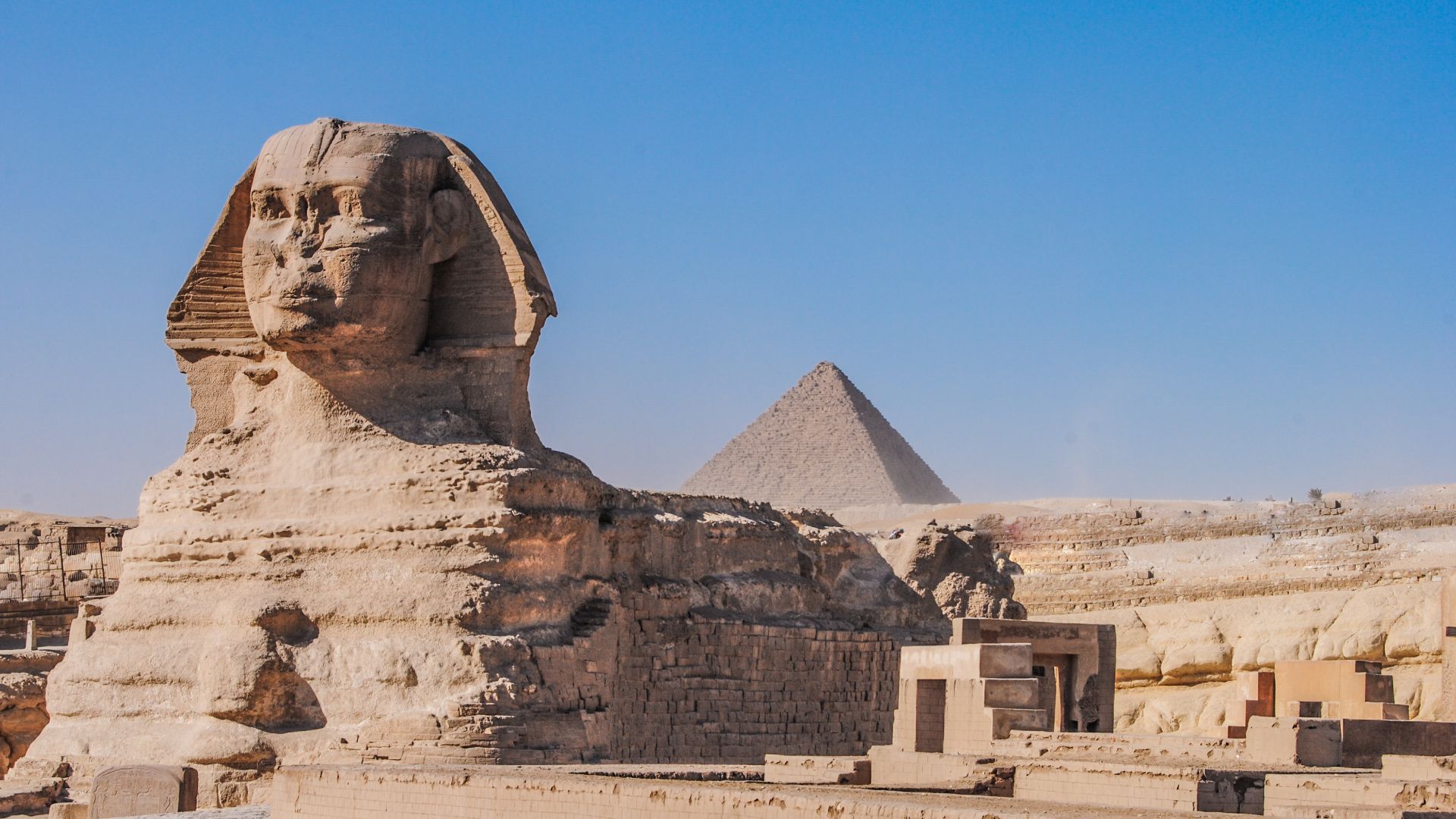 Hesham Ebaid, Wikimedia Commons
Hesham Ebaid, Wikimedia Commons
A Big Room Below
Some excavation zones reveal larger cavities, though interpreted mostly as unfinished or auxiliary rooms. These spaces, often adjacent to known tombs or shafts, show that beneath the surface lies a more complex layout than previously assumed. Even if it feels unfinished, the idea was to use it in some way unknown to us now.
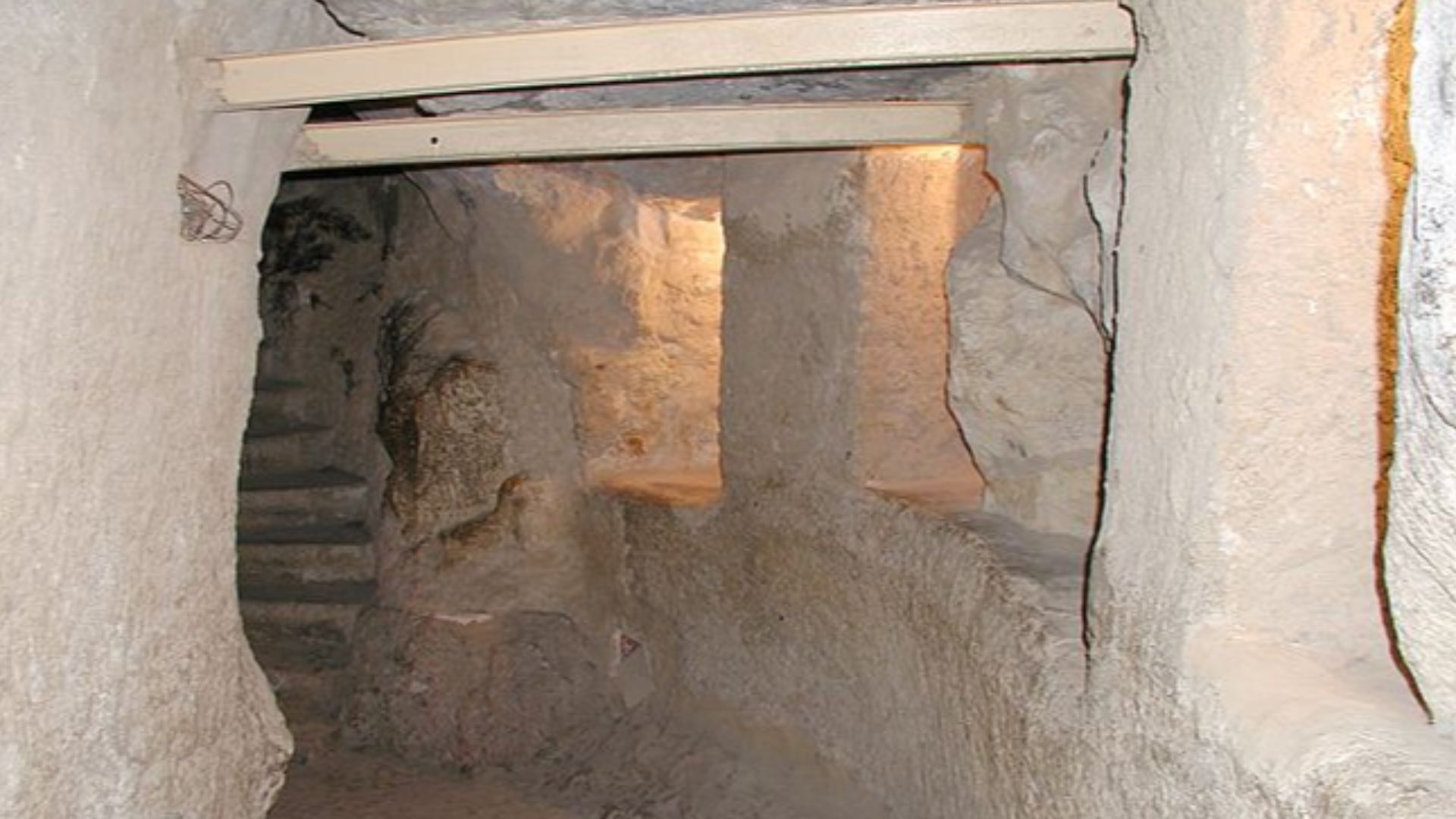 Jon Bodsworth, Wikimedia Commons
Jon Bodsworth, Wikimedia Commons
The Unused Stone Slab
Archaeologists have documented flat, uninscribed stone surfaces and partially finished slabs in underground areas at Giza. The platforms are generally interpreted as work zones or unfinished architectural features rather than ritual sites. However, there are speculations about the use as well.
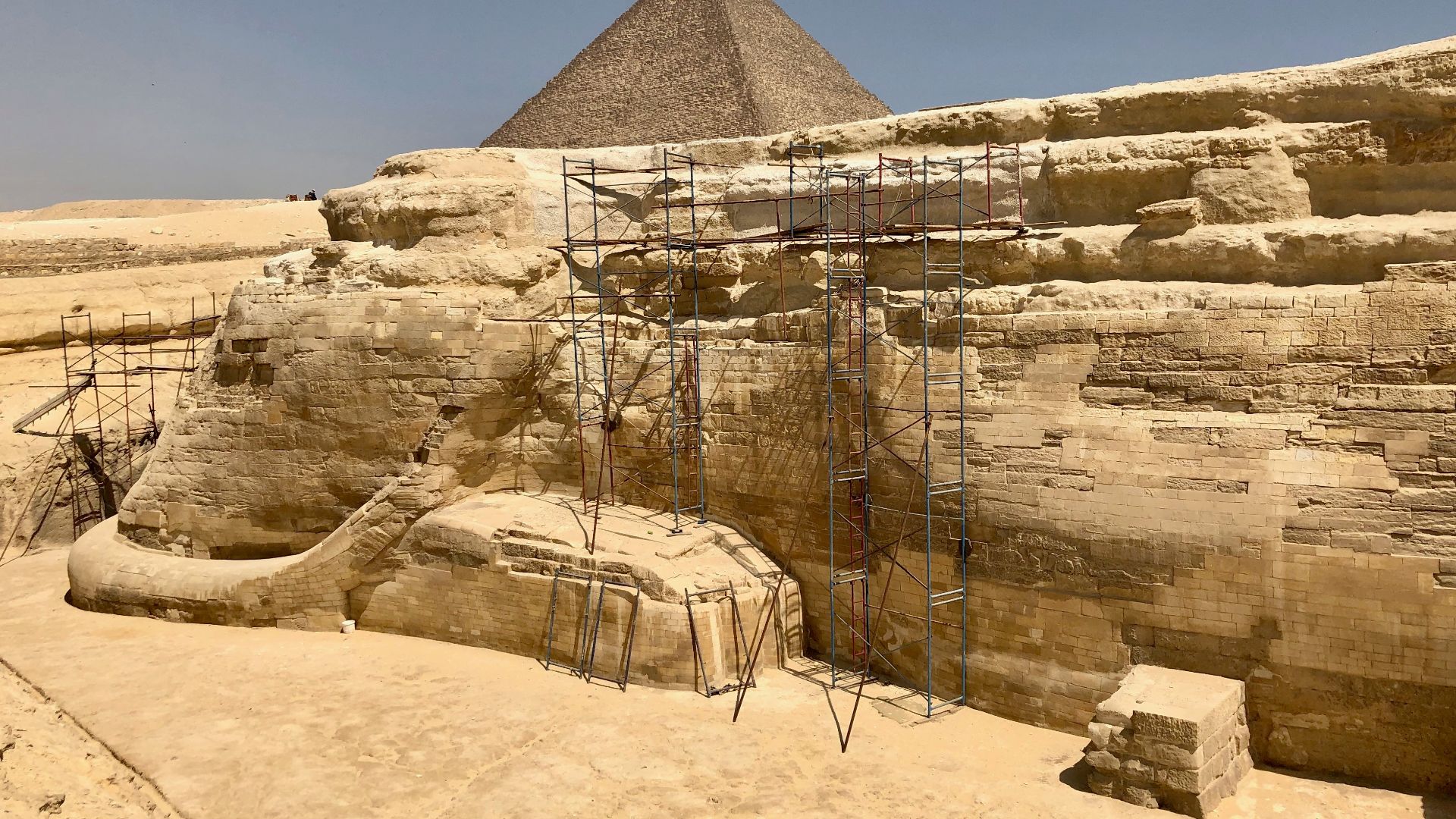 Warren LeMay from Chicago, IL, United States, Wikimedia Commons
Warren LeMay from Chicago, IL, United States, Wikimedia Commons
Access Routes In The Bedrock
In bedrock-level shafts connected to the pyramid foundations, carved steps and inclined floors are present, showing a clear descent into deeper zones. Researchers who studied the area suggest these lower extensions may have functioned as construction access points or drainage routes.
Ventilation Shafts And Hidden Angles
Engineers studying the Great Pyramid’s interior have identified narrow shafts branching from key chambers, once thought to be ventilation ducts. Later research by Egyptologists suggests these channels may have served symbolic or astronomical functions, which align with specific stars during construction.
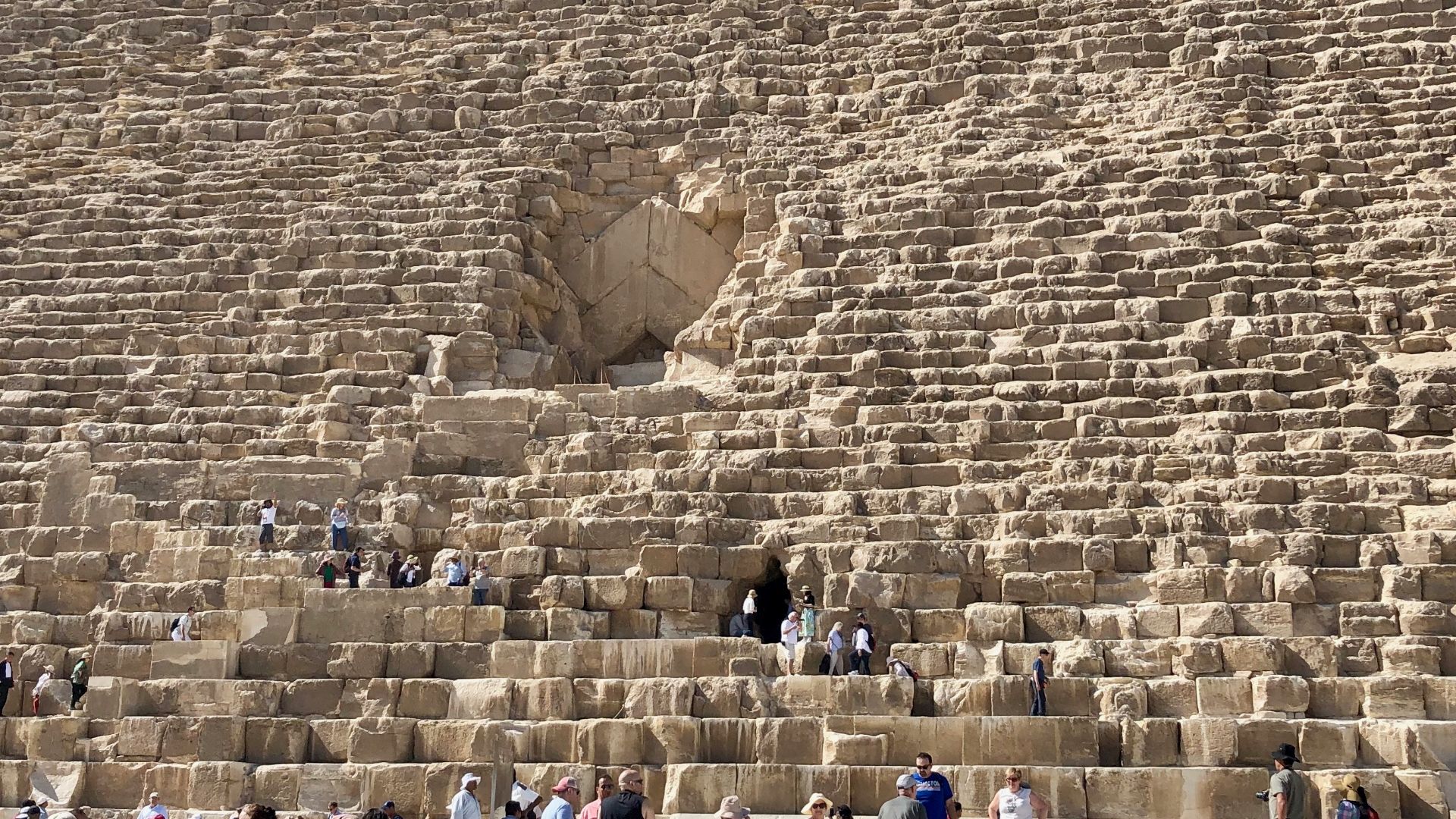 Warren LeMay from Chicago, IL, United States, Wikimedia Commons
Warren LeMay from Chicago, IL, United States, Wikimedia Commons
A Rusted Gate Ahead
During 19th and 20th-century access operations, explorers encountered sealed entries and blocked passages intended to prevent unauthorized access. There were metal gatings in some parts as well, installed during the access operations. These barriers confirm that underground zones were recognized as sensitive, even if the full network remains uncharted.
 Olaf Tausch, Wikimedia Commons
Olaf Tausch, Wikimedia Commons
Quiet Stream Below
Geological surveys, including a 2018 study by Cairo University’s Faculty of Engineering, found that Giza’s limestone bedrock holds small natural fissures and moisture channels. These aren’t man-made tunnels but natural drainage paths formed over centuries, which indicate that the ground beneath the pyramids constantly shifts with groundwater movement.
Natural Erosion And Sealed Shafts
Many closed or filled-in tunnels around Giza are geological outcomes. Cairo University’s 2018 hydrogeological study found that groundwater seepage and salt crystallization gradually collapse small shafts. These natural shifts explain why some lower passages appear sealed after thousands of years of erosion.
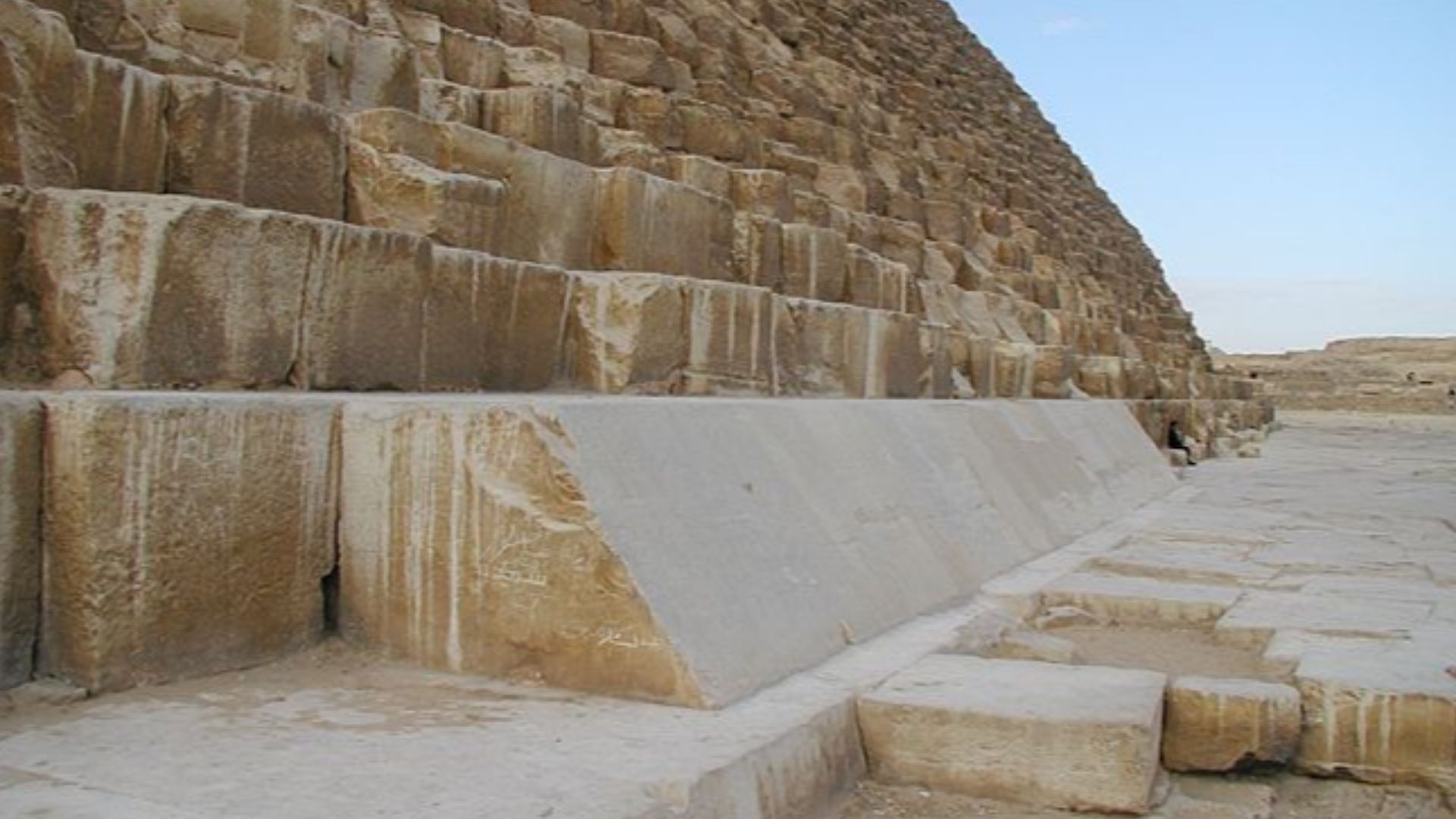 Jon Bodsworth, Wikimedia Commons
Jon Bodsworth, Wikimedia Commons
Doorway Into A Dark Room
Some older tunnels reveal door-like cuttings into rock and stone frames that could once have held wooden doors. These truncated features point to compartmentalization of underground zones that could be restricted storage or builder access rooms rather than secret initiation chambers.
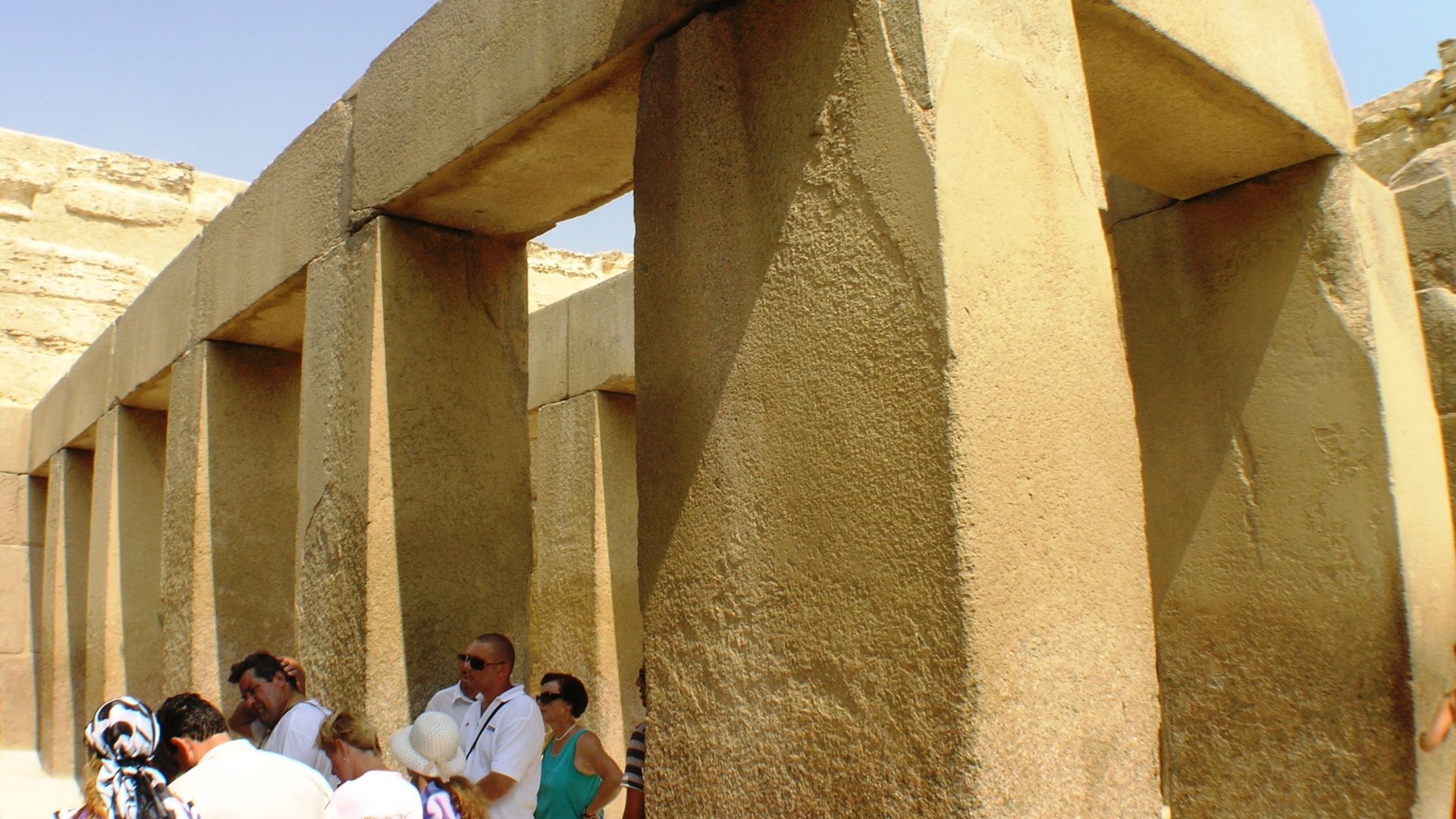 Daniel Mayer, Wikimedia Commons
Daniel Mayer, Wikimedia Commons
Empty Spaces For Relics
Experts have identified small niches and recesses in certain tomb shafts and rock-cut rooms around the Giza Plateau, mainly connected to Old Kingdom burials and storage areas. They are practical architectural elements, not evidence of hidden relic chambers or undisturbed underground shrine spaces, as speculated by some.
 Ahmedalbadawy, Wikimedia Commons
Ahmedalbadawy, Wikimedia Commons
Signs Of Older Builders
Excavations by George Reisner and Selim Hassan, later supported by Mark Lehner and Zahi Hawass, show that parts of Giza’s underground structures were expanded or modified across different Old Kingdom reigns. Subtle variations in stone cutting and tool marks reveal sequential construction phases handled by successive work crews.
 Matson Collection, Wikimedia Commons
Matson Collection, Wikimedia Commons
Function Beneath The Stone
Studies by Mark Lehner, Salima Ikram, and Miroslav Verner show that Giza’s underground passages were primarily functional and created for structural stability with construction logistics. While later pyramids linked substructures to religious beliefs, evidence from Giza supports careful engineering rather than symbolic design in these early examples.
 john and edgar morton, Wikimedia Commons
john and edgar morton, Wikimedia Commons
Tunnels Following Rock Lines
Geological surveys confirm that many shafts and corridors on the Giza plateau align with natural fractures and limestone bedding planes. By following these lines, ancient builders could reduce excavation effort. This reinforces that the underground layout was guided by geology as much as by plan.
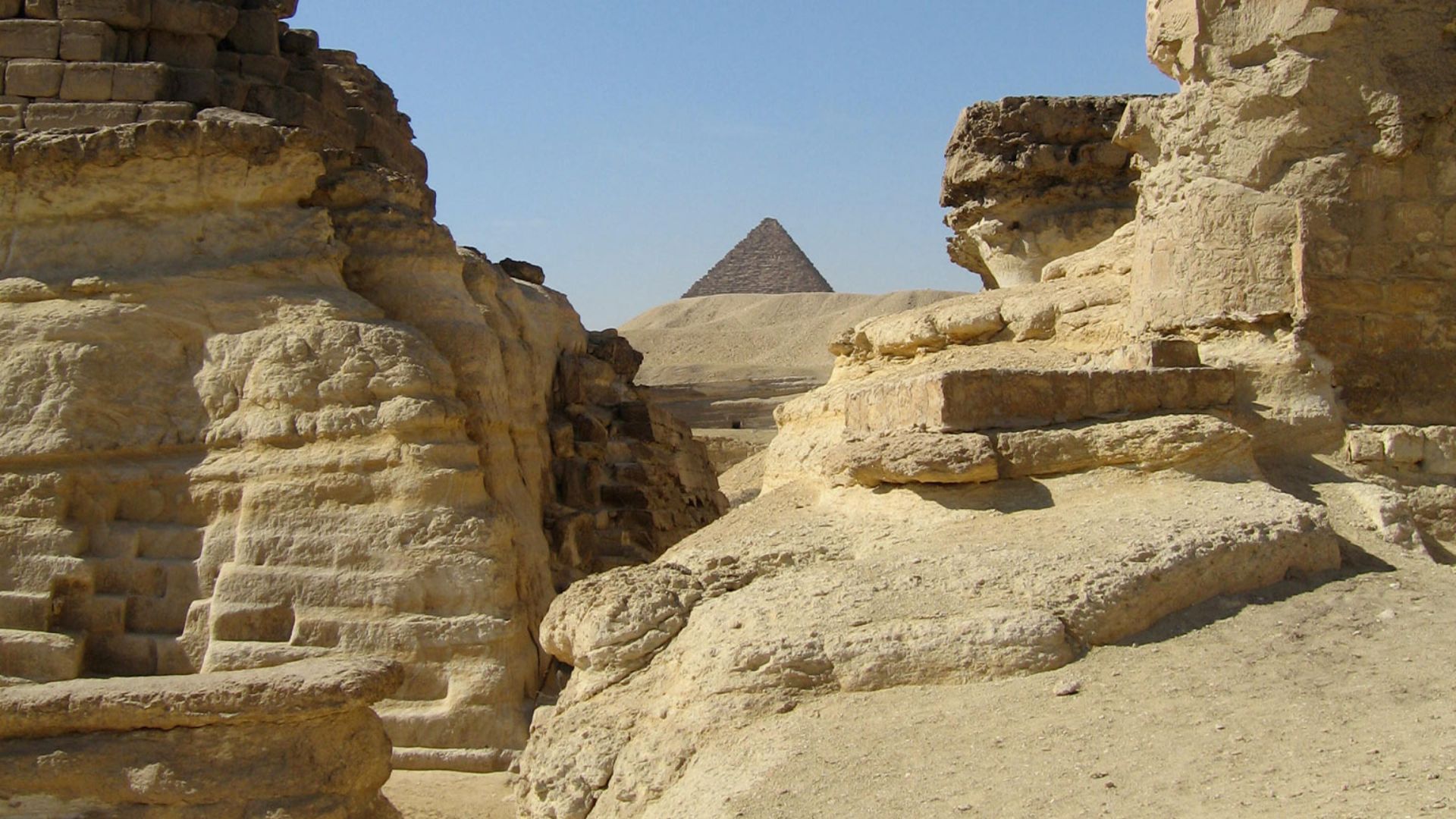 V Manninen from Funland, Wikimedia Commons
V Manninen from Funland, Wikimedia Commons
Burial Boats Beneath The Sand
Excavations south of the Great Pyramid uncovered massive pits containing dismantled wooden boats, known as “solar barques.” The most famous example, the Khufu ship, was found sealed in a limestone pit in 1954 and later reconstructed.
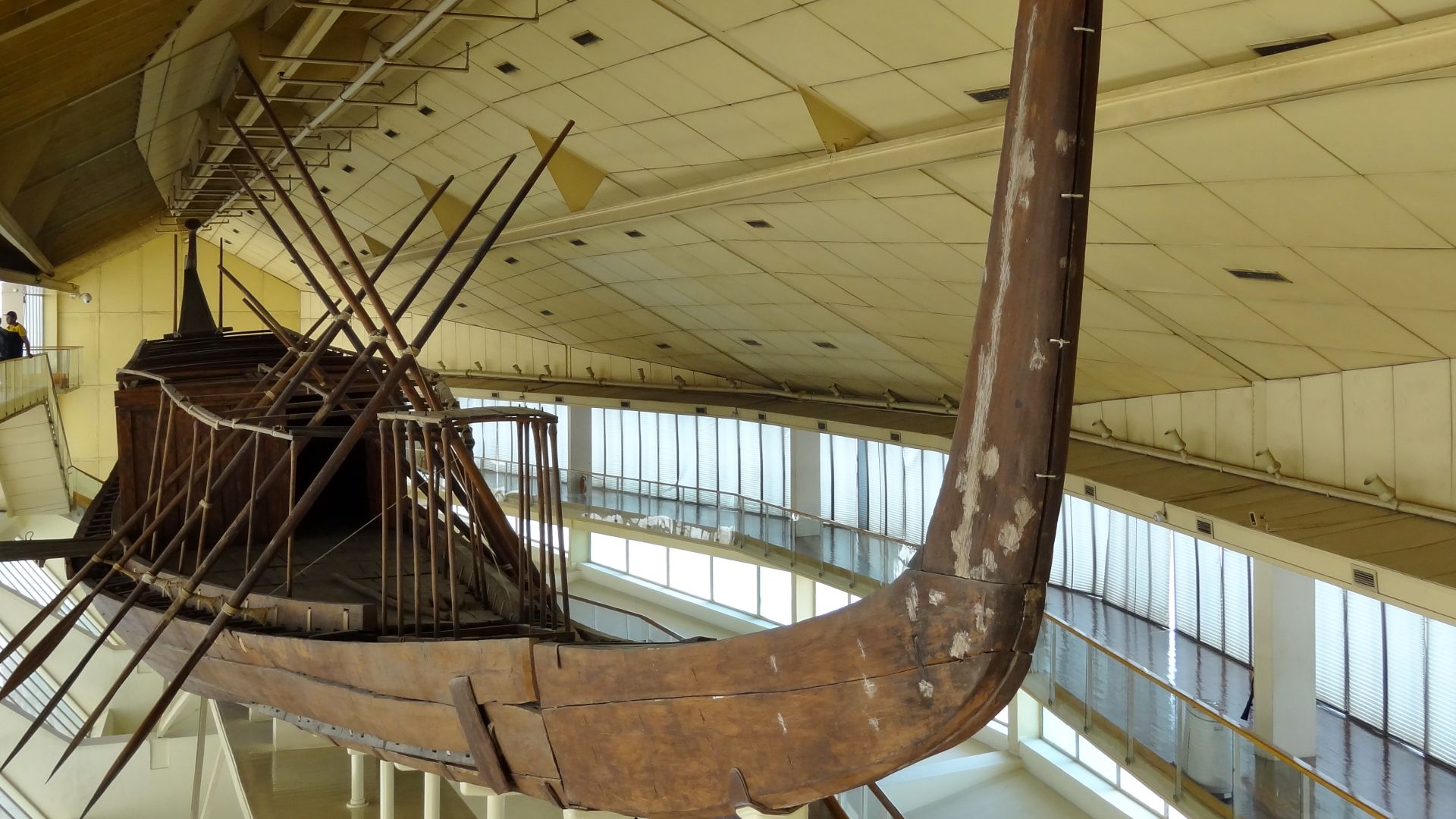 Olaf Tausch, Wikimedia Commons
Olaf Tausch, Wikimedia Commons
Storage Pits Filled With Tools And Pottery
Excavations around the workers’ settlement revealed underground storage pits cut into the limestone, containing copper tools, pottery shards, and bread molds. These finds show that beneath the plateau, builders maintained logistical hubs to support daily construction work.
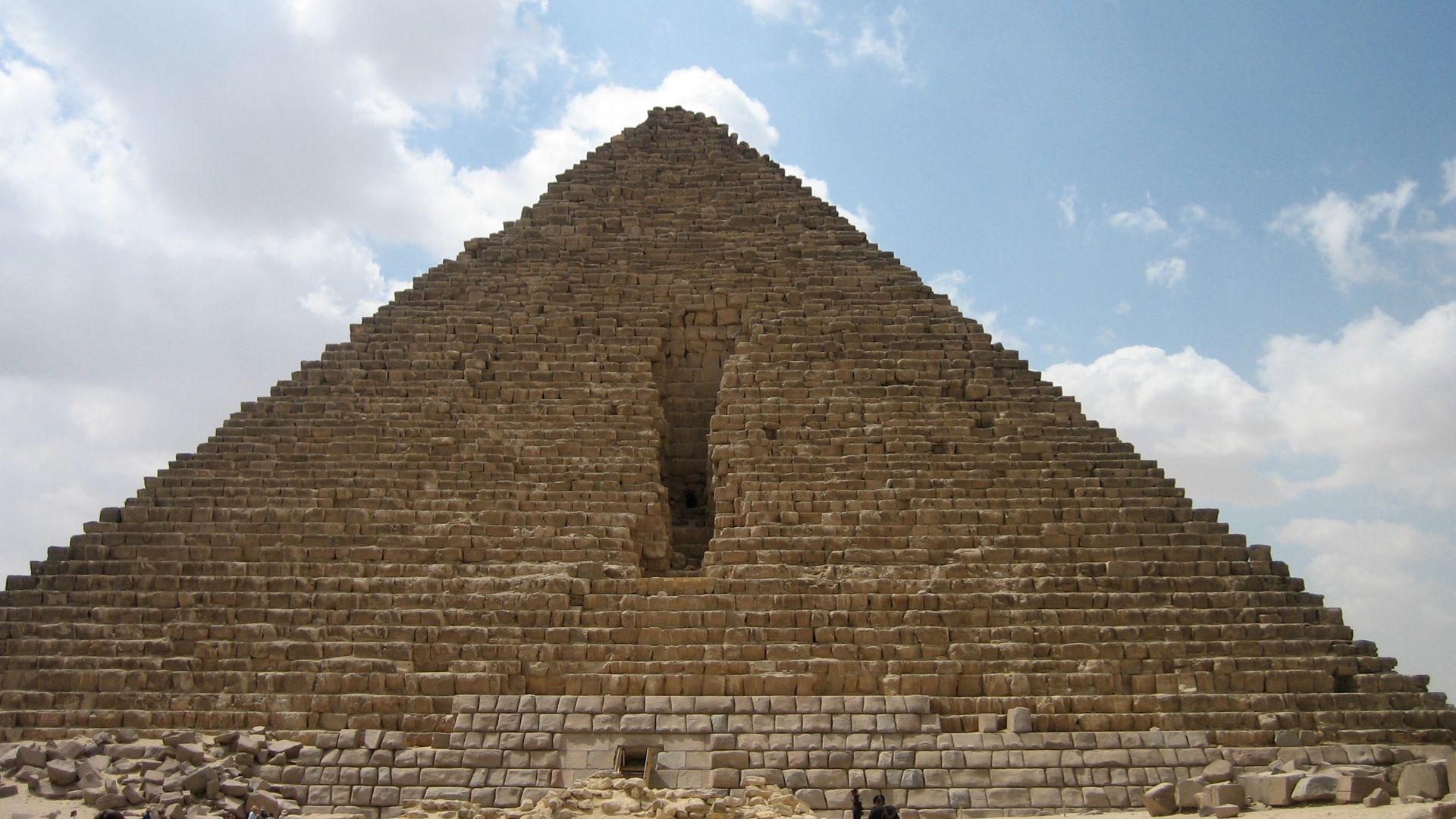 Jerome Bon from Paris, France, Wikimedia Commons
Jerome Bon from Paris, France, Wikimedia Commons
New Scan Reveals Hidden Structure
Near the Western Cemetery of the Giza Plateau, non-invasive scanning revealed a two-part buried anomaly: a shallow, L-shaped structure approximately 0.5–2 meters beneath the surface, and a deeper, rectangular zone around 3.5–10 meters deep, possibly indicating a hollow chamber.
Possibility Of Cylinder-Shaped Structures
A claim reported by TheTravel, citing scientists featured in NDTV’s coverage, suggests large cylinder-shaped formations beneath the Giza Plateau were detected using remote-sensing tools. Mainstream Egyptologists have not verified these findings, and further peer-reviewed research is required before drawing conclusions in this direction.
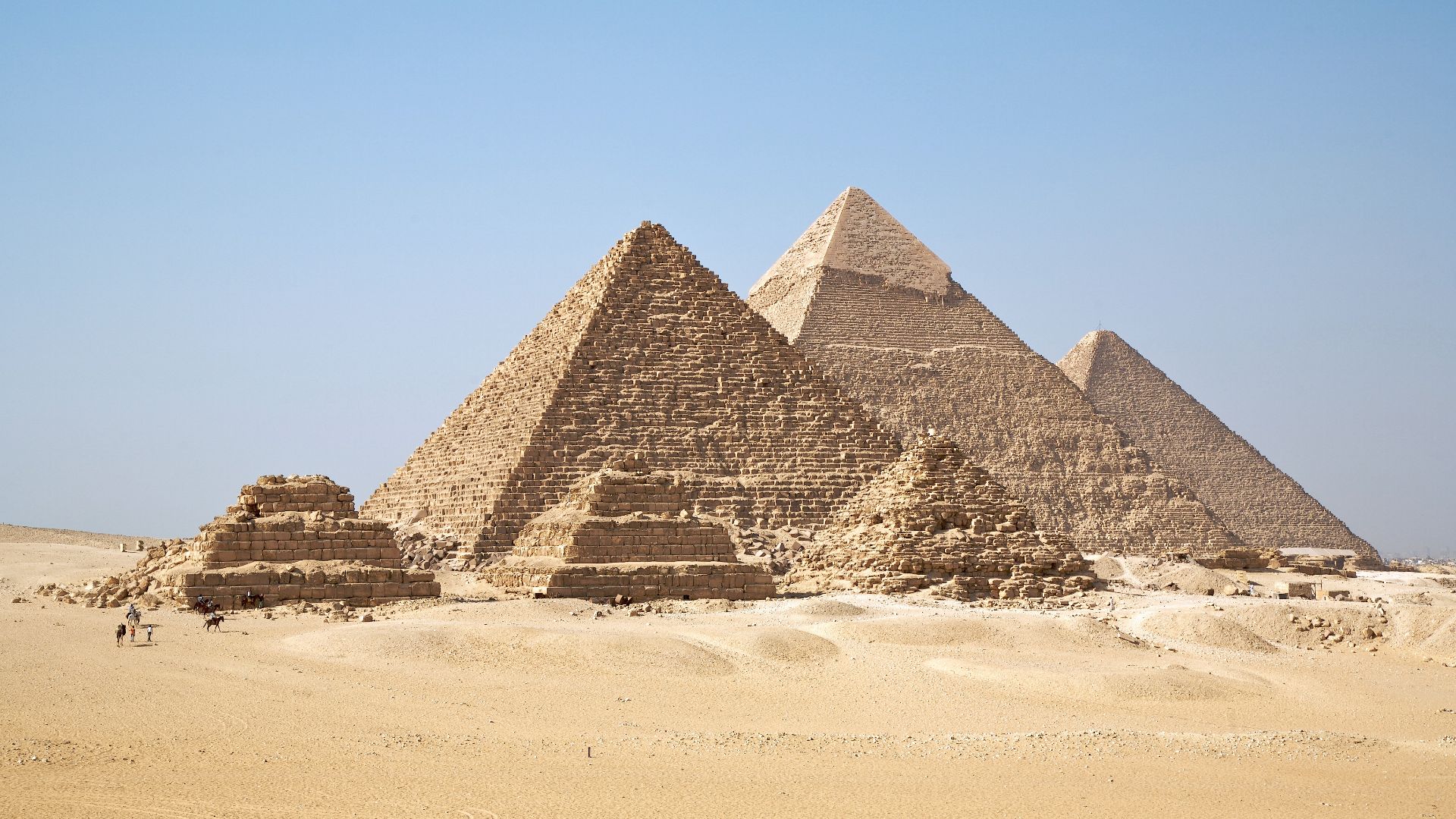 Ricardo Liberato, Wikimedia Commons
Ricardo Liberato, Wikimedia Commons
Hints Of Lower Chambers
Modern methods such as muon radiography have revealed unexpected voids inside the Great Pyramid of Giza—for example, the “Big Void” discovered in 2017. While direct access remains impossible, this supports the idea that hidden spaces, though not necessarily underground tunnels, exist within the structure itself.
 Daniel Mayer, Wikimedia Commons
Daniel Mayer, Wikimedia Commons
Quarry Origins Beneath Giza
Much of Giza’s underground system originated as ancient limestone quarries, later reused or incorporated into tomb and pyramid construction. Tool marks and unfinished cuts show these spaces were primarily industrial and shaped the early architectural footprint of the plateau.
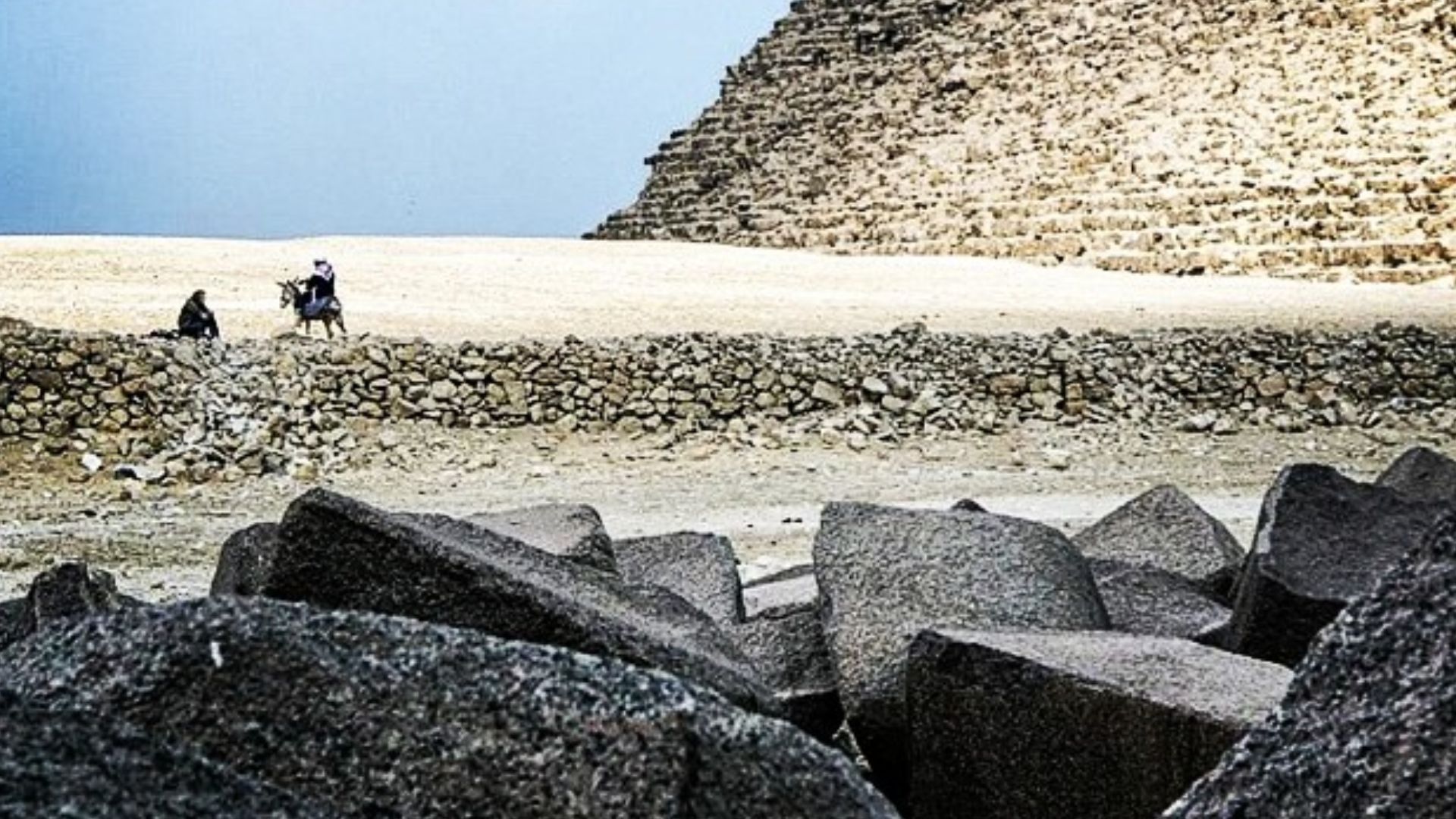 Christopher Michel, Wikimedia Commons
Christopher Michel, Wikimedia Commons
Fossil Layers Beneath The Plateau
Geological studies of the Giza bedrock reveal marine fossils embedded in the limestone, remnants of an ancient seabed from the Eocene epoch. These fossil layers lie directly beneath the pyramids and shafts, showing that the builders were carving into stone formed millions of years earlier.
 Auguste Leon, Wikimedia Commons
Auguste Leon, Wikimedia Commons


